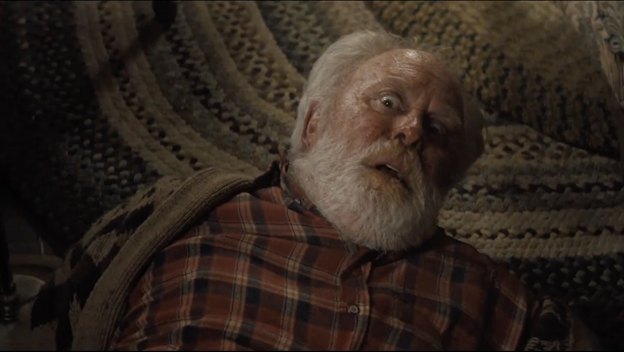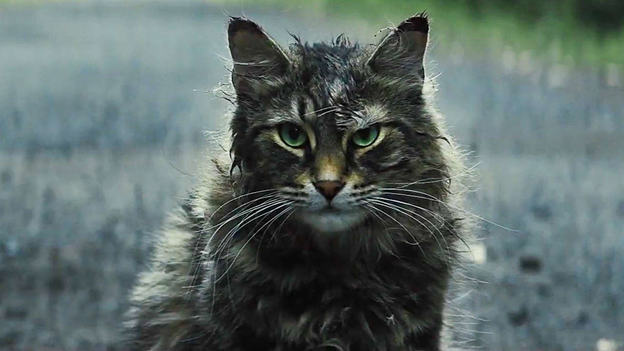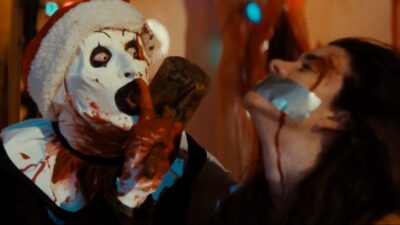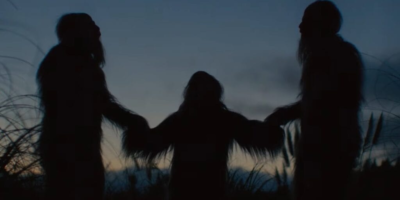Stephen King has had over 40 of his stories adapted into feature films, and countless more have become television series. I struggle to locate his appeal: his characters are almost universally two-dimensional, his socio-political commentary is frequently quite embarrassing, and he tends to repeat himself. The few good King adaptations (read: THE SHINING) pay little attention to King’s specifics—his are stories that require the deft hand of an auteur to make remotely palatable. 2019’s PET SEMATARY, unfortunately, finds itself in the hands of a visually stunted directing pair; lacking in suspense and genuine scares, you will find yourself jumping quite a bit (though that is solely the credit of its aggressive sound mixing). Put simply, it is all bark—and no bite.
We’ve already seen an adaptation of this novel—the 1989 film of the same name which, despite some awful performances, manages to maintain a genuine creepiness for the majority of its runtime before bumping heads with King’s juvenile imagination. It works in spite of him. This new outing upholsters the same concept with a modern sheen: a hectic doctor and his family move to an idyllic New England town, where the doctor (played by the always reliable Jason Clarke) discovers a graveyard that can bring the dead back to life. John Lithgow is the wizened neighbor and Amy Seimetz takes on the thankless role of Clarke’s wife.
Directors Kolsch and Widmyer open the film with roving overhead shots of the family’s new overgrown surroundings, clearly echoing THE SHINING—though armed without Kubrick’s encyclopedic knowledge of lenses, or understanding of how to evoke horror in anodyne environs, there isn’t much spookiness to be had. Clarke’s Louis is thrust into his new position at the hospital, expecting ear infections and whooping cough, but is instead tasked with saving the life of a gored-up young man in a traffic accident. He fails, but the boy resumes breathing post-mortem to warn Louis of the dangers of the Pet Sematary. Kolsch and Widmyer whiff the scene, exaggerating what should be a relatively quiet and subdued exchange. It is all cranked to 11 with the pair, which doesn’t mesh well with the picture’s overall air of smug pretension.

If only the audience also had this look on their faces
Lithgow is very good in the role of Jud, playing equal parts enigmatic and old-fashioned charm—it is he who introduces Clarke’s Louis to the Pet Sematary after the beloved family cat, Churchill, meets his untimely demise in a traffic accident. Production design of the Sematary is perhaps a little too expansive for its own good, and reeks, at times, of obvious green screen. The film is glimpsed through the standard, desaturated palette of modern horror, a major downgrade from the ‘89’s deceptive cheeriness. Everything is taken quite literally here.
Tragedy strikes and sets the increasingly ridiculous plot into motion. In an early scene, Louis and Rachel (Seimetz), attempt to assuage their daughter’s concerns about Churchill. Things don’t go according to plan, as Rachel and Louis contradict themselves on the promise of an afterlife. Louis is a non-believer, a proponent of logical, rational thinking—until the plot requires him to perform a complete about face. It is the typical right-wing fantasy: that someone who doesn’t believe has committed an egregious sin, and must be made to suffer for it. We’ve seen this lazy trope before, and it’s surprising that Kolsch and Widmyer adopt this thread, given it is not present in the ‘89 film. Clarke’s Louis lacks any semblance of internal consistency and Kolsch and Widmyer make little effort to chart his trajectory from man of pragmatism to man of insanity, resulting in an unsatisfying second half (the film seems about 30 minutes longer than it is, another testament to the directing pair’s amateurism).

I wish I could look this good after dying
There are no scares other than the jumping variety here, but they are “well done.” I mean that in the sense that they are effective, they serve their purpose—they get you to jump, and some audiences may only be looking for that. When the picture does eventually devolve into hysterics, it gets really bad; Kolsch and Widmyer, if they had studied Kubrick at all, would have learned that there is nothing scary about kids carrying out acts of physical aggression. It is the ultimate in suspension of disbelief to believe an adult cannot easily neutralize a nine-year-old, and it is asking far too much of the audience to accept. Kubrick understood that kids in horror can only be utilized as emblems for a larger idea of violence, the notorious hallway twins being a prime example of this.
A reimagining of a particular character results in the film harboring unintentional but quite potent racism—suffice it to say that the film is quite comfortable showing the carnage wreaked upon a black body but is mightily averse to the idea of treating a white body the same way. It’s indicative of the film’s overall cowardice—even the violence is decidedly innocuous PG-13 stuff. King fans will be disappointed as Kolsch and Widmyer take many liberties with the source material, horror fans will be disappointed at the utter lack of anything approaching suspense, and everyone else will simply shrug their shoulders. The picture is dead on arrival, and I don’t predict anyone going to the Sematary to revive it.















Comments